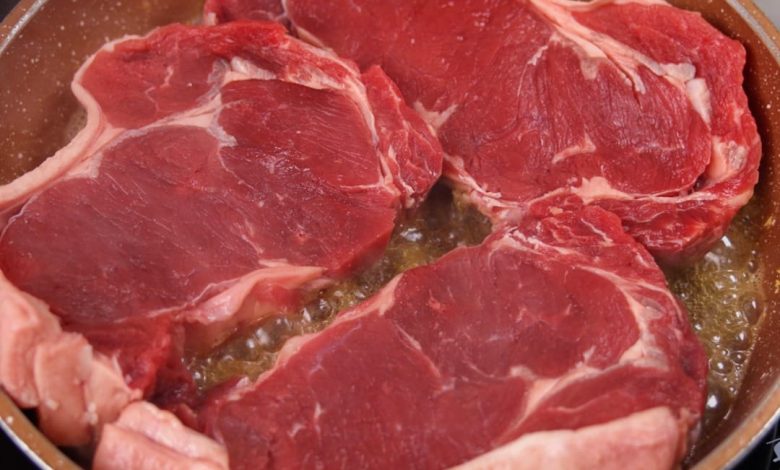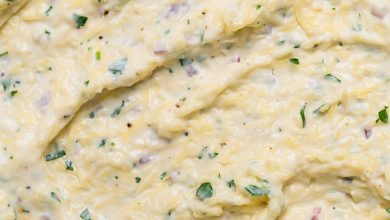Perfectly Seared Steak

There’s nothing quite like a perfectly seared steak: tender, juicy, and bursting with flavor. Achieving that ideal sear transforms a good meal into an unforgettable dining experience. Whether you’re preparing it for a special occasion or simply treating yourself, mastering the art of searing steak is a culinary skill that every home chef should possess. This comprehensive guide will walk you through the steps to achieve steak perfection, from preparation to plating.
ADVERTISEMENT
Ingredients: The Building Blocks of Flavor
To create the perfect seared steak, start with high-quality ingredients. The right cut of meat, paired with simple yet flavorful additions, will elevate your dish to new heights. Here’s what you’ll need:
ADVERTISEMENT
| Ingredient | Quantity |
|---|---|
| Ribeye steaks | 2 steaks, each about 1-inch thick |
| Olive oil | 1 tablespoon |
| Unsalted butter | 2 tablespoons |
| Garlic cloves, smashed | 3 cloves |
| Fresh thyme | 4 sprigs |
| Salt | To taste |
| Freshly ground black pepper | To taste |
Preparing the Steak: The Foundation of a Perfect Sear
- Bring to Room Temperature: Remove the steaks from the refrigerator and let them come to room temperature for about 30 minutes. This step ensures even cooking, allowing the heat to penetrate the meat uniformly.
- Pat Dry and Season: Pat the steaks dry with paper towels to remove excess moisture, which is crucial for achieving a good sear. Season generously with salt and freshly ground black pepper on both sides. The salt draws out moisture from the surface, helping to create a flavorful crust.
Heating the Pan: The Key to a Sizzling Sear
- Choose the Right Pan: For a perfectly seared steak, a heavy-bottomed skillet, such as cast iron, is ideal. Its ability to retain and evenly distribute heat makes it perfect for achieving that beautiful, caramelized crust.
- Preheat the Pan: Heat the skillet over medium-high heat. Add the olive oil and wait until it begins to shimmer and just starts to smoke. This indicates that the pan is hot enough to sear the steak properly.
Searing the Steak: Crafting a Golden Crust
- Initial Sear: Place the steaks in the hot pan, ensuring they are not touching. This allows for even searing. Cook the steaks without moving them for 3-4 minutes. This undisturbed cooking time is essential for developing a rich, golden-brown crust.
- Flip and Cook: Flip the steaks and continue cooking for another 3-4 minutes for medium-rare. Adjust the time based on your preferred level of doneness: 130°F for medium-rare, 140°F for medium, and 150°F for medium-well. Using a meat thermometer helps ensure precision.
Basting the Steak: Adding Depth of Flavor
- Introduce Aromatics: Reduce the heat to medium. Add the butter, garlic, and thyme to the pan. These aromatics infuse the steak with rich, complex flavors.
- Basting Technique: Tilt the pan slightly to pool the melted butter. Use a spoon to baste the steaks with the flavorful butter continuously. Basting not only enhances the taste but also adds a luxurious finish to the steak.
Resting the Steak: Locking in Juices
- Transfer and Rest: Once the steaks have reached your desired doneness, transfer them to a cutting board. Let them rest for at least 5 minutes. This crucial step allows the juices to redistribute throughout the meat, resulting in a juicy and tender steak.
- Slice and Serve: Slice the steak against the grain for maximum tenderness. Serve immediately, drizzling the basting butter over the top for an extra burst of flavor.
Choosing the Perfect Steak: Understanding Cuts and Quality
When it comes to achieving the perfect sear, the quality and cut of the steak are paramount. Here are some tips for selecting the best steak:
ADVERTISEMENT
- Marbling: Look for steaks with good marbling—the white streaks of fat within the muscle. Marbling enhances the flavor and tenderness of the meat.
- Cut: Ribeye, filet mignon, and New York strip are excellent choices for searing. Each offers a unique balance of tenderness and flavor.
- Grade: In the U.S., beef is graded by the USDA based on factors like marbling and age. Prime and Choice are the top grades, with Prime offering the most marbling and flavor.
The Science Behind the Sear: Maillard Reaction
The secret to the perfect sear lies in the Maillard reaction, a chemical reaction between amino acids and reducing sugars that gives browned food its distinctive flavor. This reaction occurs at high temperatures and is responsible for the complex, savory flavors in seared meat. Achieving the right balance of heat and time is essential for maximizing the Maillard reaction and, consequently, the steak’s flavor.




